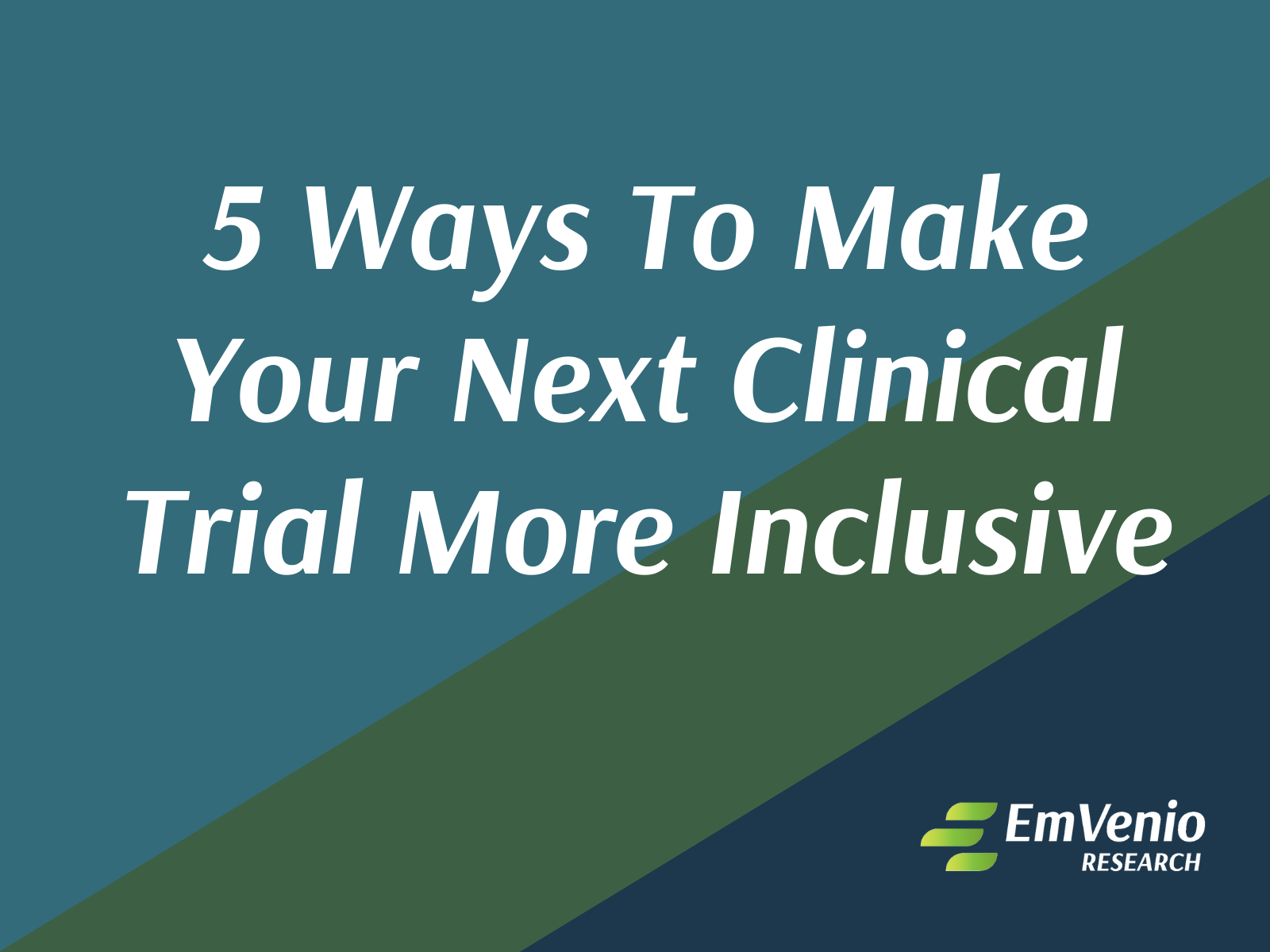Diseases can affect individuals in different ways. In order to ensure the success and effectiveness of clinical trials, it is crucial to have a diverse range of individuals from different communities participate. By including people from various backgrounds, experiences and characteristics, such as race, ethnicity, age, gender and sexual orientation, we can create a truly representative sample that reflects the diverse population affected by diseases. Innovative and impactful scientific advancements have the power to revolutionize the way we approach diseases and improve the lives of millions.
However, underrepresentation among racial minorities and lower income households has posed a long-time challenge for traditional clinical trials. A 2021 Inclusion Statistics Report by the National Institute of Health’s Research, Condition, and Disease Categories system showed that out of 295 studies reported, an average of only 5% of participants identified as Hispanic or Latino. Those same studies also reported an average of 11% participation among the Black or African American community.
The same organization reported that trial participation decreased as annual household income decreased. Families with a household income between $20,000 and $49,999 showed a 13% participation rate, and families with a household income lower than that reported just an 11% participation. With people of color making up 39% of the U.S. population, one can only conclude that racial disparity in clinical trials are apparent.
With the large discrepancy between racial inclusion, here are five steps you can take to make your next clinical trial more inclusive.
- Education and awareness
Increasing awareness about the importance of clinical trial participation within racial and ethnic communities is key. Try holding education sessions, workshops or even webinars to share information about your clinical trial. Take the time to address common misconceptions and provide more details about the process and potential benefits. - Diverse recruitment strategies
When recruiting a specific population, the best way is through implementing targeted strategies. Actively seek out individuals from underrepresented communities, utilize social media platforms and target community events. - Culturally competent outreach
Reviewing your marketing and recruitment materials is a great place to start. Check to ensure these items are tailored to the audience you want to reach. Recruitment materials and outreach efforts should be culturally sensitive and relevant to diverse communities. Additionally, be sure to offer information in multiple languages and consider cultural nuances so that you can effectively engage your target audience. - Collaboration with community organizations
Working with organizations established within your target community is a great way to connect with your audience. Advocacy groups, community outreach organizations and faith-based institutions all have established trust within certain racial and ethnic communities. Utilizing these partnerships to host events, disseminate information and even provide support throughout the clinical trial can be a valuable tool. - Ease of access
One of the biggest barriers to participation can be access to trials. These barriers can include transportation assistance and flexible scheduling. That is why organizations like EmVenio Research operate clinical trials through mobile research sites. This method has allowed us to connect directly with underserved populations and contribute to representation in clinical research.
Not all bodies are made equal. Ensuring representation in medical studies is essential in improving effectiveness and accessibility to all individuals and mitigating safety concerns for underrepresented communities. EmVenio accesses various resources, technologies and partners to truly understand the correlation between clinical trial gaps and a community’s demographics. We make informative decisions on what studies to conduct in a specific community based on its socioeconomic landscape, disease prevalence and other priorities of clinical research organizations. In previous studies, we’ve surpassed CROs’ inclusivity goals as a result of our efforts to build community awareness and drive recruitment among target patient types.
By taking the steps provided, researchers can work toward a more inclusive landscape in clinical trials and ultimately improve health care outcomes for all. To learn how EmVenio’s approach can better reach target patients and help make your next clinical trial more inclusive, please contact us today.

